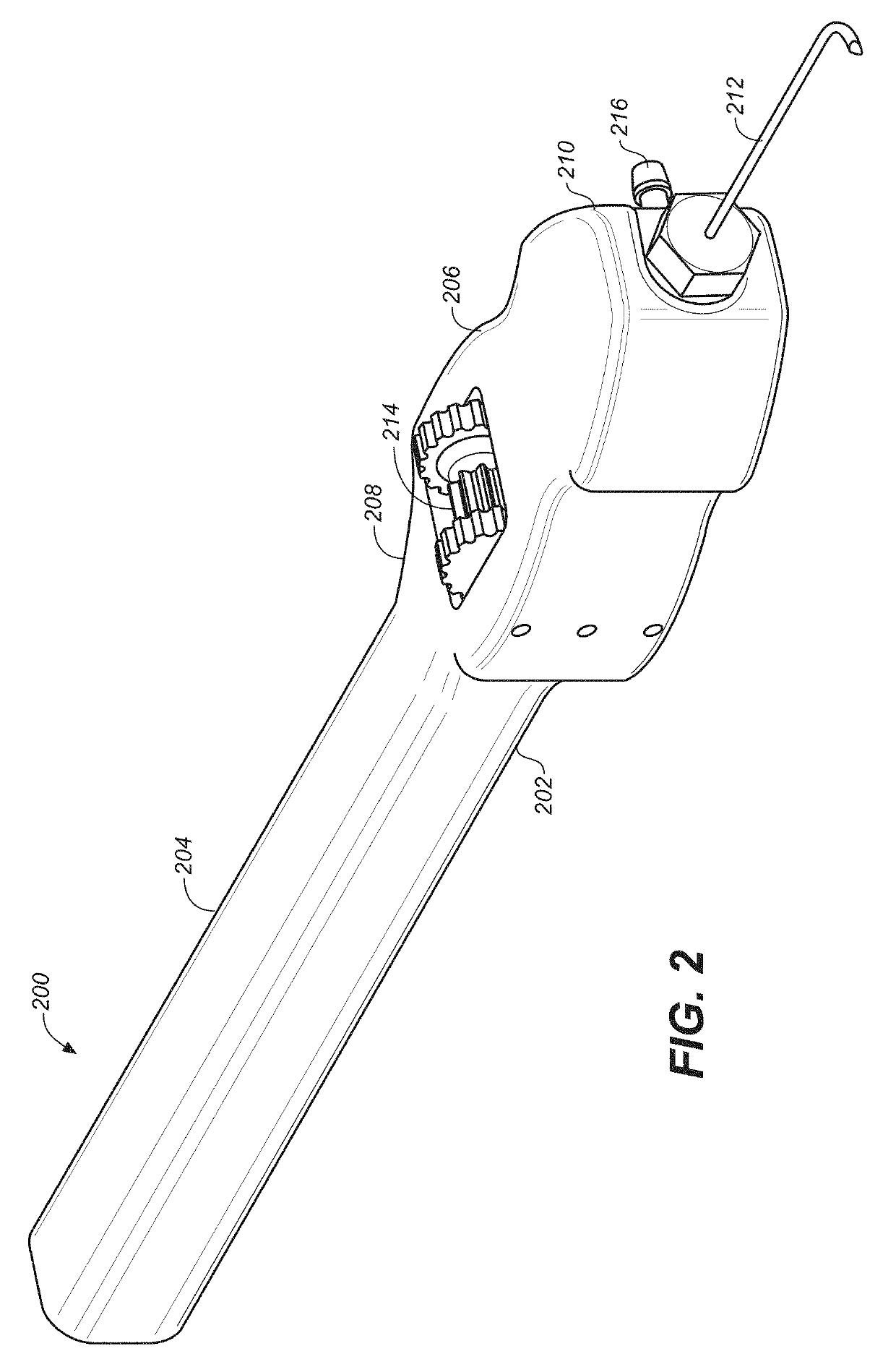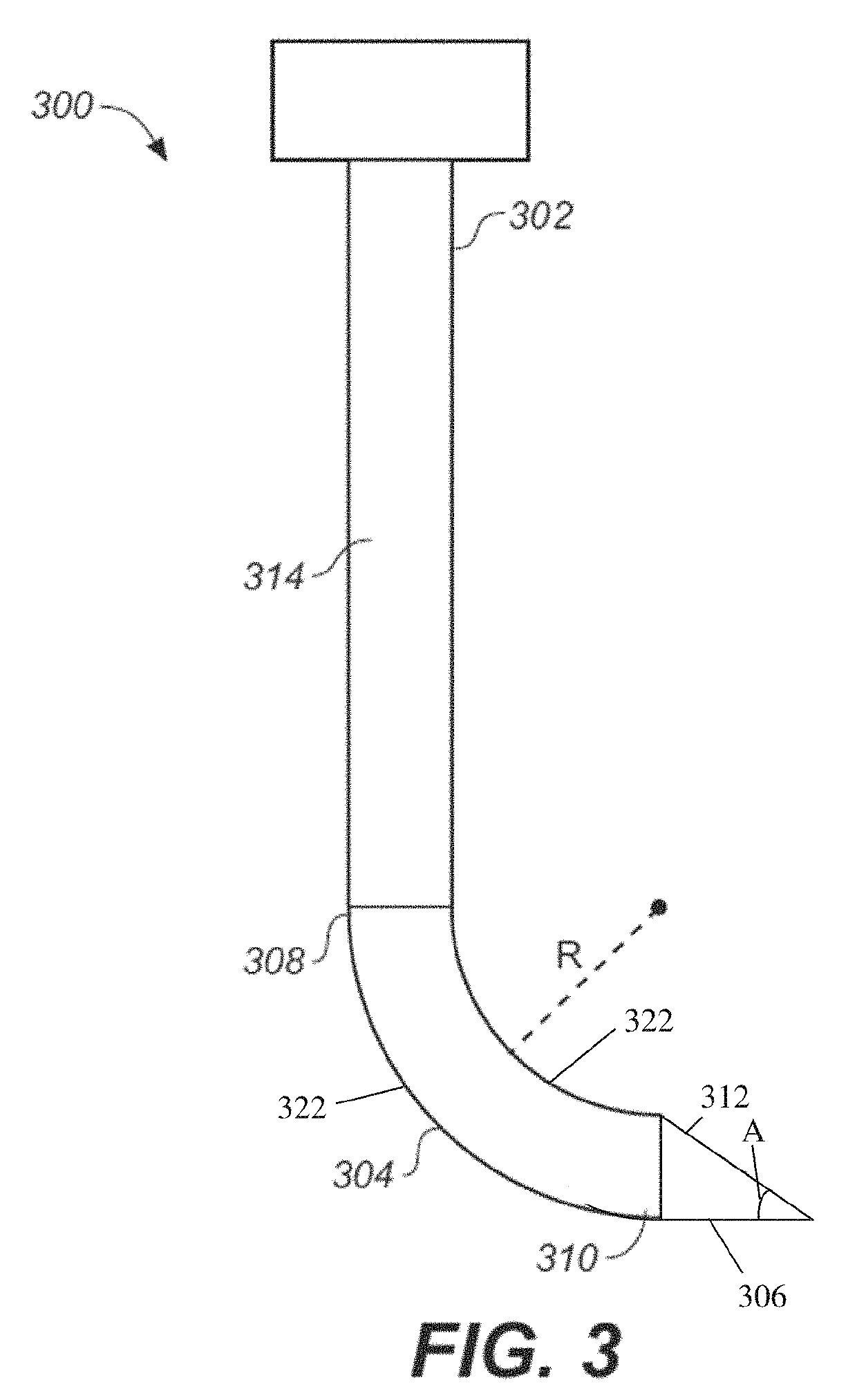Ocular delivery systems and methods
a delivery system and ocular technology, applied in the field of ocular delivery systems and methods, can solve the problems of loss of vision, progress to blindness, and long-term risks of traditional trabeculectomy procedures, and achieve the effects of reducing trauma, facilitating and reliably accessing the schlemm's canal, and reducing the risk of blindness
- Summary
- Abstract
- Description
- Claims
- Application Information
AI Technical Summary
Benefits of technology
Problems solved by technology
Method used
Image
Examples
Embodiment Construction
[0081]Described here are systems and methods for accessing Schlemm's canal and for delivering an ocular device, tool, and / or fluid composition therein to reduce intraocular pressure and thereby treat conditions of the eye. The fluids and certain components of the system, e.g., the slidable elongate member, may be used to provide a force for disrupting trabeculocanalicular tissues, which include the trabecular meshwork, juxtacanalicular tissue, Schlemm's canal, and the collector channels. As used herein, the term “disrupting” refers to the delivery of a volume of fluid or a system component that alters the tissue in a manner that improves flow through the trabeculocanalicular outflow pathway. Examples of tissue disruption include, but are not limited to, dilation of Schlemm's canal, dilation of collector channels, increasing the porosity of the trabecular meshwork, stretching the trabecular meshwork, forming microtears or perforations in juxtacanalicular tissue, removing septae from ...
PUM
 Login to View More
Login to View More Abstract
Description
Claims
Application Information
 Login to View More
Login to View More - R&D
- Intellectual Property
- Life Sciences
- Materials
- Tech Scout
- Unparalleled Data Quality
- Higher Quality Content
- 60% Fewer Hallucinations
Browse by: Latest US Patents, China's latest patents, Technical Efficacy Thesaurus, Application Domain, Technology Topic, Popular Technical Reports.
© 2025 PatSnap. All rights reserved.Legal|Privacy policy|Modern Slavery Act Transparency Statement|Sitemap|About US| Contact US: help@patsnap.com



